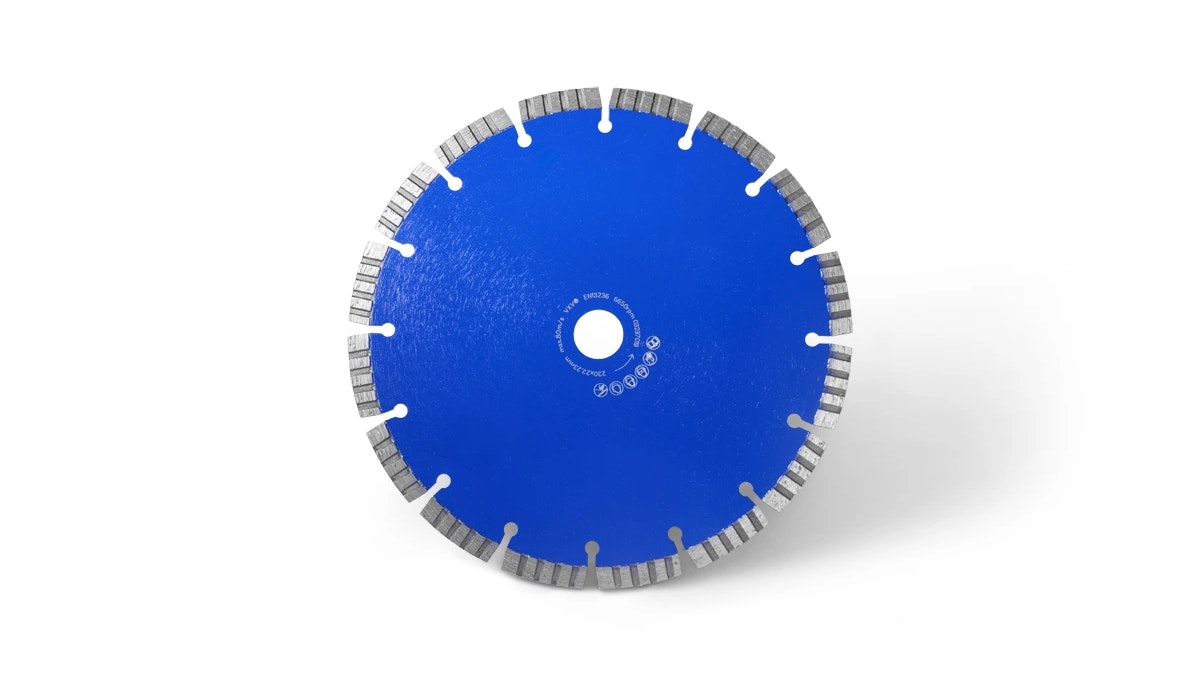
"Diamonds in each segment are bound to the blade in various ways, the most common being sintering. Sintering is a process of compressing metal powder into a mold with great force so that it assumes the desired shape. The metal pieces are then heated, sometimes for days, until the metal fuses."
What are diamond blades
Diamond blades are made with diamonds. These blades are constructed from high-quality steel and, as the name suggests, contain real diamonds, which are not the same as those in engagement rings. These gems are all synthetic, allowing for control over key properties such as crystal shape, size, and strength.
Structure of a diamond blade
Before delving into how these blades work, let's look at their basic structure. A diamond blade consists of three main parts: the core, the segment, and the gullets. The core is the central metal disk to which the blade segments are attached. The stronger the attachment to this core, the stronger the blade. The segment is a piece of metal enriched with diamonds, welded or brazed to the core of the blade and is the main component in cutting or grinding materials. The gullets are slots in the core of the blade that allow for faster cooling by providing water or air flow between the segments.
How diamond blades work
As the cutting blade spins, the diamonds embedded along the edge of the blade are exposed and grind the material. Over time, the exposed diamonds break and fall off the blade due to heat and pressure. This is okay because diamonds are embedded throughout the entire segment of the blade, and new diamonds are revealed as the blade is used. Diamonds in each segment are bound to the blade in various ways, the most common being sintering. Sintering is a process of compressing metal powder into a mold with great force so that it assumes the desired shape. The metal pieces are then heated, sometimes for days, until the metal fuses. For diamond blades, synthetic diamonds are scattered through the metal powder to create a bond with the diamonds.
Bond strength and importance
The bond between the diamonds and the blade varies in hardness for each blade since the blade is designed to wear away during use, continually revealing more diamonds. The rate at which the bond wears is as important as the choice of the blade itself. Often, the hardness of the bond is opposite to the material being cut. For instance, a very hard, less abrasive material needs to be cut with a soft bond. This allows a specific rate of wear that matches the material being cut. Conversely, soft and abrasive materials, such as asphalt or concrete, need to be cut with a hard blade to extend the blade's life.

One of the main things to consider is the use of the blade or the type of cutting for which you are using it. A segmented blade allows for fast and rough cutting. Segmented blades can be used for dry or wet cutting, as the slots on the edge of the blade allow for air flow and cooling of the blade core. The size and shape of the slots vary from blade to blade and largely depend on the type of material you are cutting.
An asphalt blade has scoop-shaped slots for faster removal of fine material and increased cutting speed. This blade is primarily used for cutting asphalt, concrete, and other abrasive materials. As a general rule: the more abrasive the material, the wider the slots should be to allow better heat dissipation.
The last type of diamond blade, the continuous rim blade, cuts the slowest of all but also provides the smoothest cut. Heat dissipation is crucial for the long life of the blade. Therefore, continuous rim blades are mostly used with water-cooled machines. The difference between wet and dry cutting is that wet cutting, as the name suggests, uses water to assist in cutting and cooling through thick tiles, reinforced concrete, metal, bricks, and other masonry materials. Dry cutting, on the other hand, is ideal for indoor use. Unlike wet cutting, dry cutting is intended for occasional and smaller-scale cutting.
In the next article, we will delve into a specific area and present differences between diamond cutting blades in the same category. Like us on Facebook and stay informed about new articles on the topic of diamond blades.



